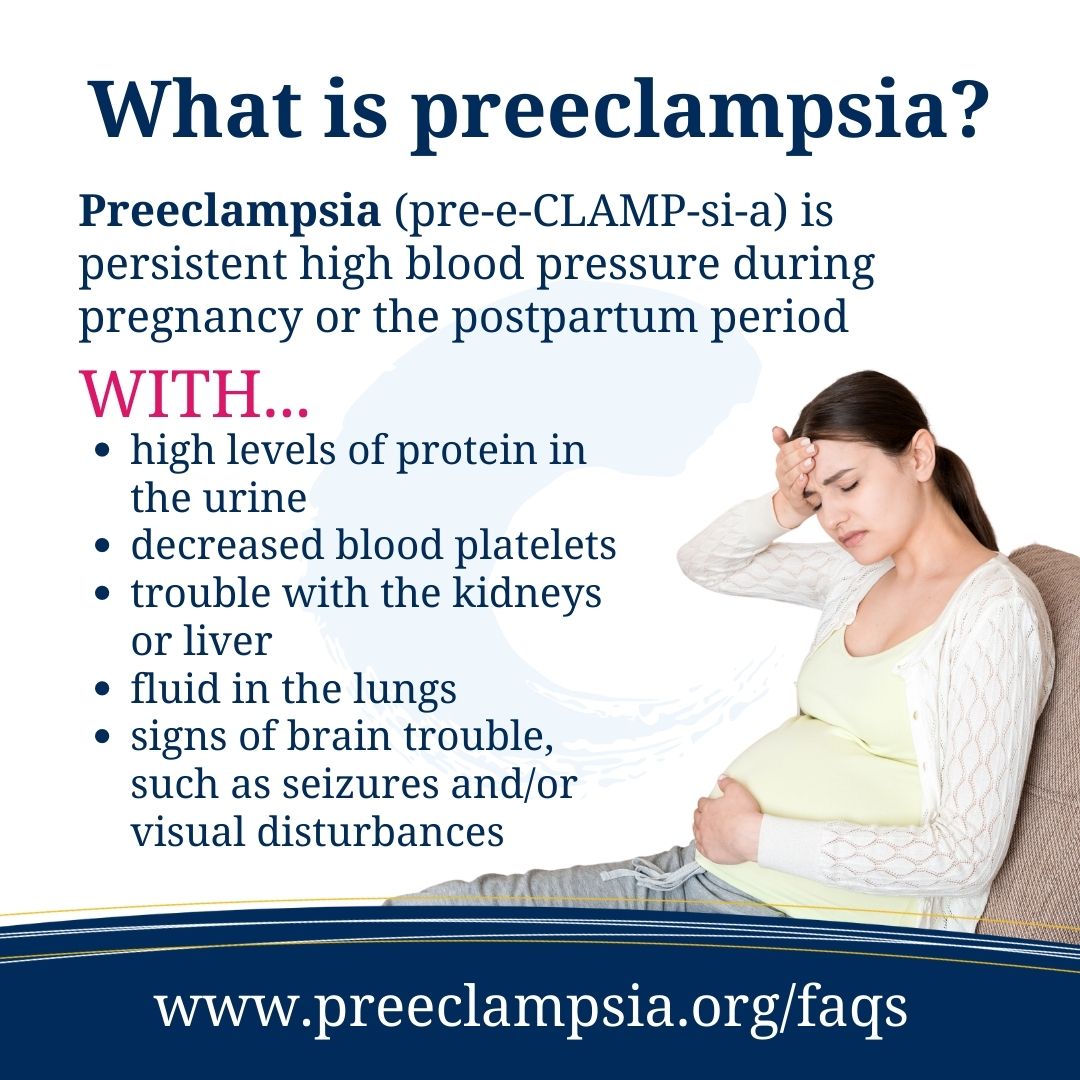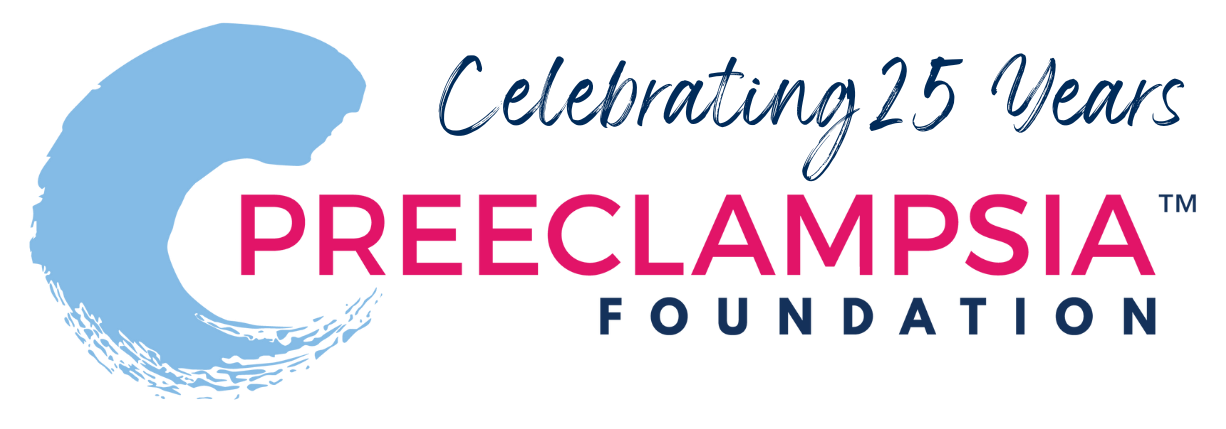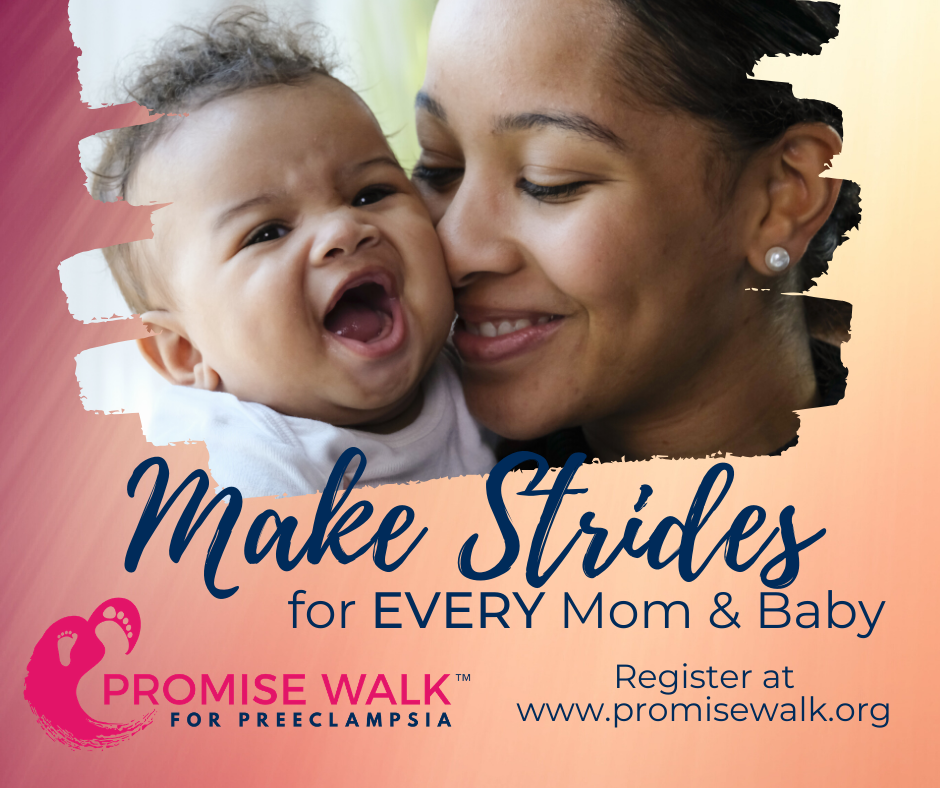
WHAT IS PREECLAMPSIA
Last Updated on May 31, 2023
Preeclampsia is persistent high blood pressure that develops during pregnancy or the postpartum period and is often associated with high levels of protein in the urine OR the new development of decreased blood platelets, trouble with the kidneys or liver, fluid in the lungs, or signs of brain trouble such as seizures and/or visual disturbances.
Preeclampsia (pre-e-CLAMP-si-a) is persistent high blood pressure that develops during pregnancy or the postpartum period. It is often associated with high levels of protein in the urine or the new development of decreased blood platelets, trouble with the kidneys or liver, fluid in the lungs, or signs of brain trouble such as seizures and/or visual disturbances.
Preeclampsia is diagnosed by the elevation of the expectant patient's blood pressure usually after the 20th week of pregnancy and is unique to human pregnancy. According to guidelines released by the American College of Obstetricians and Gynecologists, the diagnosis of preeclampsia no longer requires the detection of high levels of protein in the urine (proteinuria). Evidence shows that problems with the kidneys and liver can occur without signs of protein in the urine. The amount of protein in the urine does not predict how severely the disease will progress. Most healthcare providers traditionally adhered to a rigid diagnosis of preeclampsia based on blood pressure and protein in the urine prior to these new guidelines.
Preeclampsia is now diagnosed by persistent high blood pressure that develops during pregnancy or the postpartum period that is associated with high levels of protein in the urine OR the new development of decreased blood platelets, trouble with the kidneys or liver, fluid in the lungs, or signs of brain trouble such as seizures and/or visual disturbances.
Important symptoms that may suggest preeclampsia are headaches, abdominal pain, shortness of breath or burning behind the sternum, nausea and vomiting, confusion, heightened state of anxiety, and/or visual disturbances such as oversensitivity to light, blurred vision, or seeing flashing spots or auras. Preeclampsia and related hypertensive disorders of pregnancy impact 5-8% of all births in the United States.
Most women with preeclampsia will deliver healthy babies and fully recover. However, some women will experience complications, several of which may be life-threatening to mother and/or baby. A woman’s condition can progress to severe preeclampsia very quickly. The rate of preeclampsia in the US has increased 25% in the last two decades and is a leading cause of maternal and infant illness and death.
Preeclampsia and other hypertensive disorders of pregnancy can be devastating diseases, made worse by delays in diagnosis or management, seriously impacting or even killing both women and their babies before, during or after birth.

What does preeclampsia do?
Preeclampsia can cause your blood pressure to rise and put you at risk of brain injury. It can impair kidney and liver function, and cause blood clotting problems, pulmonary edema (fluid on the lungs), seizures and, in severe forms or left untreated, maternal and infant death. Preeclampsia affects the blood flow to the placenta, often leading to smaller or prematurely born babies. Ironically, sometimes the babies can be much larger, but scientists are not certain that preeclampsia was the cause. While maternal death from preeclampsia is rare in the developed world, it is a leading cause of illness and death globally for mothers and infants.
For more about preeclampsia, eclampsia, or HELLP syndrome, please see our Frequently Asked Questions.
Have a question? Ask us here.
1748547461.png)
My sister Francilia Jadine Garcia passed away on April 18,2025 after delivery two healthy twin boys, Elijah and Micah Garcia on March 20,2025...
ReadMoreIt is our collective voice that reduces isolation for others, raises awareness and improves healthcare practices. Let's raise up our voices so more women know about preeclampsia and HELLP syndrome and less women have adverse outcomes!
Related Articles

Ánimo y cuídate: la preeclampsia puede estar asociada con enfermedades cardíacas y accidentes cerebrovasculares más adelante en la vida Descargue nuestra hoja informativa

Eclampsia is a very serious complication of preeclampsia characterized by one or more seizures during pregnancy or in the postpartum period.

La preeclampsia, en todas sus formas, puede requerir muchos análisis, tanto durante como después del embarazo. ¿Alguna vez se preguntó por qué el proveedor de atención médica le solicita tantos anális...

El embarazo es un momento ideal para familiarizarse con su presión arterial. Aquí encontrará todo lo que necesita saber sobre cómo tomarse la presión arterial en casa.

Melbourne, FL – September 17 , 2024 – The Preeclampsia Foundation, in partnership with the International Society for the Study of Hypertension in Pregnancy (ISSHP) and Society for Ma...

Resultados de varios estudios apoyan la hipótesis de que el estrés causado por un embarazo y parto traumáticos puede en muchas ocasiones anular la habilidad de salir adelante emoc...

Is there a connection between maternal diet and preeclampsia? The PRECISE Network research team and I recently completed an evidence review to compile information on maternal nutritional factors that...

What you’ll learn in this article: Many risk factors contribute to an individual’s chance of getting preeclampsia. These risk factors may be genetic, physical, environmental, and even s...

Question: Progesterone supplementation - first trimester and beyond - can it help the vascular constriction by keeping the smooth muscle relaxed (17HP shots), and is it associated with early supplemen...



